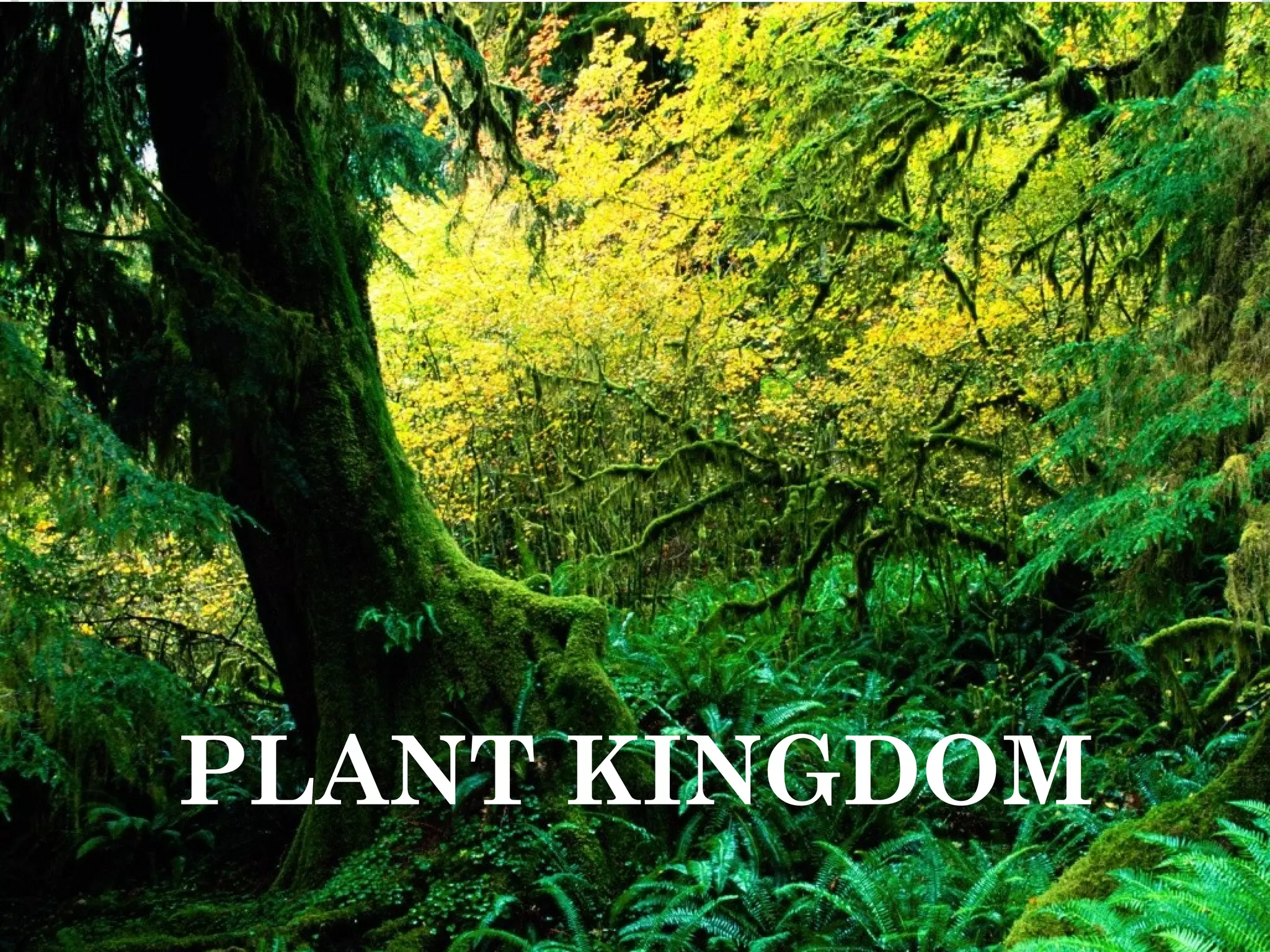Plants originated from green algae in the oceans and have since colonized all environments on Earth through adaptations. They are divided into two main groups - plants without seeds like mosses and ferns, and plants with seeds including gymnosperms like conifers and angiosperms. Plants are multicellular autotrophs that produce their own food through photosynthesis, where chloroplasts in leaves use chlorophyll, water, carbon dioxide and sunlight to produce oxygen and glucose. Sexual reproduction in seed plants involves pollination transferring pollen between male and female parts, leading to fertilization and seed formation in fruits.
















































